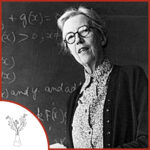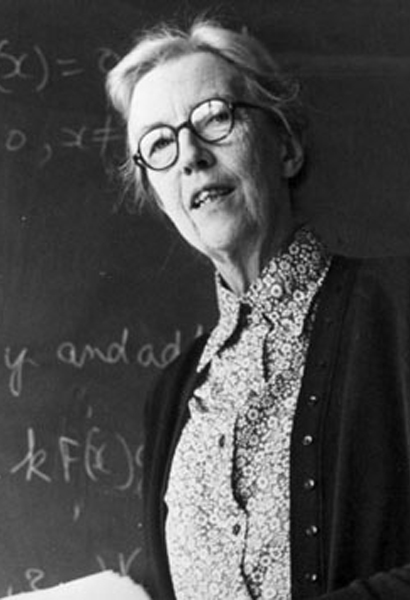

Birth: December 17, 1900
Death: April 3, 1998
Specialty: Analytic function theory
Major Contributions:
First to analyze dynamical system w/chaos
Cartwright’s Theorem
First Woman President of London Mathematical Society
First woman to receive Sylvester Medal
As one of only five women studying mathematics at Oxford University right after the end of World War I, it was difficult for Mary Cartwright to even attend lectures due to overcrowding. But she persevered and in 1923 was the first woman to obtain a first-class degree from the school.
Working as a teacher for four years she also got a taste of the administrative side of education. Returning to Oxford in 1928 she began working toward her Doctor of Philosophy in mathematics. Her doctoral thesis was focused on the zeroes of integral functions and became the start of a series of papers and then a book on integral functions published in 1956.
In 1930, after finishing her doctorate she was awarded a Yarrow Research Fellowship to continue the work she started with her thesis, attending lectures at Girton College at Cambridge. At the lectures of John Littlewood, she solved one the open problems he had posed using a new approach applying a technique introduced by mathematician Lars Ahlfors for conformal mappings. This theorem, now known as Cartwright’s Theorem, gave an estimate for the maximum modulus of an analytic function which takes the same value no more than p times in the unit disc.
Appointed a lecturer in mathematics at Cambridge in 1935, the next year she also became the director of studies in mathematics at Girton College. A memorandum produced by the Radio Research Board of the Department of Scientific and Industrial Research looking for mathematicians to work on modeling radio and radar work published in 1938 piqued Cartwright’s interest. In trying to understand the problems put fourth she started a collaboration with Littlewood on the solutions of the Van der Pol equation and discovered many of the phenomena that later became known as “chaos”.
In 1949 she was promoted to the Mistress of Girton College and in 1959 she was promoted to a Reader in Theory of Functions at Cambridge holding both positions until her retirement in 1968. During her career she had over 100 papers published on varying parts of mathematics including classical analysis, differential equations, and related topological problems. When asked in an interview which of her papers was her favorite her reply told a lot about her sense of humor: “the one I am working on at the moment.”
Written by Angela Goad
Sources:
American Mathematical Society: Mary Cartwright (1900-1998)
Biographies of Women Mathematicians: Dame Mary Lucy Cartwright
See Also:
Theorem of the Day: Cartwright’s Theorem
Encyclopedia of Mathematics: Entire Function
